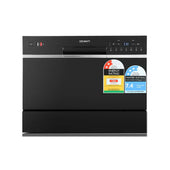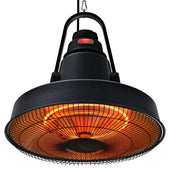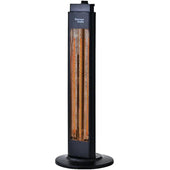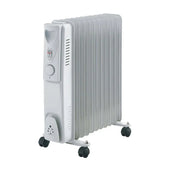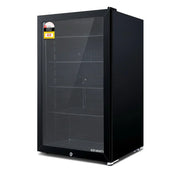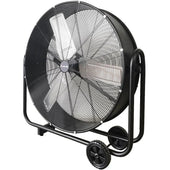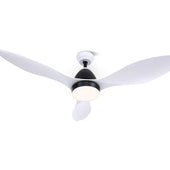Understanding the Purpose of Your Room Divider
Identifying the purpose of a room divider is crucial before making a selection. Whether the goal is to enhance privacy, create distinct zones, or add aesthetic appeal, understanding its intended use helps narrow down options. A divider may serve as a practical solution for splitting a shared living space, concealing clutter, or blocking sunlight. Alternatively, it might act as a decorative accent, complementing existing interiors. Consider its function alongside the room’s layout and size. Thoughtful consideration of these aspects ensures the choice not only fulfils its purpose but also harmonises with the overall style and atmosphere of the space.
Assessing the Space and Layout of Your Room
Before selecting a room divider, evaluating the dimensions and layout of the room is essential. Measure the available floor space to ensure the divider fits without overwhelming the area. Take note of the room’s shape and structural elements, such as windows, doors, and furniture placement, as these will influence divider positioning.
Consider the purpose of the space to determine whether you need a full-coverage divider or a partial one for an open feel. For smaller rooms, opt for lightweight, foldable designs to maximise flexibility. In more spacious settings, larger statement dividers can enhance visual appeal without crowding the area. Always prioritise functionality and proportion during days.
Exploring Types of Room Dividers: From Screens to Shelves
Room dividers come in various styles, materials, and functionalities, allowing individuals to tailor their choice based on design preferences and need for privacy.
- Screens and Panels: These free-standing options are often decorative and portable, ranging from fabric-covered frames to intricate lattice designs. They are ideal for flexible spaces and can be effortlessly repositioned.
- Shelving Units: Open or closed shelves offer a dual purpose—creating partitions while providing storage. They can be customised with decorative items or books, making them an excellent choice for communal spaces.
- Curtains or Drapes: Soft fabric partitions add a cosy feel and work well in both large and small spaces. They are easy to install, adjustable, and can complement the room's decor.
- Sliding Doors: These options are perfect for creating semi-permanent divisions. Single-panel or multi-panel glass doors often add an elegant and modern touch.
- Foldable Dividers: Lightweight and space-saving, they are perfect for temporary partitions. Their compact design allows them to fit into various room layouts effortlessly.
Each type addresses specific needs, from enhancing aesthetics to providing functional barriers in multi-use spaces.
Material Matters: Choosing Durable and Stylish Options
Selecting the right material for a room divider is essential to ensure durability and aesthetic appeal. Diverse materials like wood, metal, fabric, glass, and woven fibres offer a range of options suited to various interior styles and needs. Solid wood provides a timeless and sturdy choice, while metal adds a modern, industrial touch. Fabric dividers are lightweight and versatile, often featuring prints or textures for added visual interest. Glass dividers create an open, airy feel and maximise light, although privacy can be limited. Woven materials, such as rattan, offer a natural and textured look, complementing boho or minimalist designs seamlessly.
Finding the Perfect Balance Between Functionality and Aesthetics
Selecting a room divider requires a thoughtful approach to balance both practicality and design. A highly functional divider may maximise privacy or storage, while an aesthetically pleasing one can enhance the room’s overall style. To achieve this harmony:
- Prioritise Purpose: Consider the primary need—be it separating spaces, adding storage, or enhancing décor. A functional goal should guide design choices.
- Choose Materials Wisely: Wooden dividers exude warmth, while glass options add light and elegance. Fabric designs can balance practicality with a softer visual appeal.
- Ensure Cohesion: Look for colours and textures that complement existing furniture yet create distinction.
- Focus on Dual-Use Designs: Dividers with built-in shelves or integrated art offer both function and a decorative element.
Balancing these elements ensures practicality without sacrificing visual charm.
Considering Portability and Flexibility in Design
Portability and flexibility play key roles in choosing a room divider, especially for dynamic living spaces. Dividers with lightweight materials, such as fabric or plastic, are ideal for frequent repositioning. Folding screens and accordion-style designs offer easy manoeuvrability and can collapse for compact storage.
For multifunctional interiors, consider dividers with casters or modular setups that allow effortless reconfiguration. Options with adjustable panels or height customisation ensure the divider adapts to changing needs. Additionally, portable dividers with built-in storage or display shelves can serve dual purposes, enhancing convenience.
Assess how the divider integrates with varied layouts while maintaining balance and functionality, ensuring adaptability across uses.
Integrating Colour and Patterns for Harmony and Impact
When selecting a room divider, achieving balance between colours and patterns is essential for cohesive design. A divider with complementary tones can tie a room’s overall aesthetic together. Neutral hues like greys, whites, or beiges work well in minimalist spaces, while bold colours such as deep blues or burnt oranges add energy to eclectic interiors.
Patterns should either complement or subtly contrast existing decor. Geometric designs convey modernity, whereas florals and ornate motifs introduce traditional warmth. To maintain harmony, pairing a patterned divider with solid-coloured walls is effective. Consider textures, as woven or wooden surfaces amplify visual depth, making the divider an impactful focal point.
Thinking About Privacy and Transparency Levels
When selecting a room divider, understanding its privacy and transparency levels is crucial. Different materials and designs offer varied levels of coverage, impacting the overall atmosphere. Glass or acrylic dividers may provide a functional, semi-transparent effect, creating subtle separation while maintaining visibility. Fabric or wooden panels, on the other hand, can block views entirely, delivering a private and cosy feel. Adjustable partitions with slats allow flexibility, enabling users to alter transparency as needed. Consider the placement of the divider—those used in home offices or dressing areas may demand higher privacy, while decorative dividers in living spaces might benefit from added transparency.
Customisation and DIY Options to Suit Your Space
Selecting a room divider that matches the aesthetic and functionality of your space can be made easier with customisation or creative DIY solutions.
- Custom Features: Many manufacturers offer bespoke options, allowing choices in materials, colours, sizes, and patterns to better integrate with existing decor.
- Reconfigurable Designs: Modular designs provide flexibility to rearrange sections as needed, adapting to changing room layouts.
- DIY Solutions: Repurposing items like bookshelves, curtains, or folding screens offers unique, budget-friendly alternatives. Room dividers can also be created using reclaimed wood, fabric panels, or lightweight partitions for personalisation.
Incorporating personalised touches ensures the divider not only separates spaces but also adds a distinctive design element.
Top Tips for Maintaining and Cleaning Your Room Divider
- Regular Dusting: Use a soft microfiber cloth or feather duster to remove dust from surfaces, especially in intricate designs, to prevent buildup.
- Avoid Harsh Chemicals: Clean with mild soap and water when needed; harsh cleaners can damage materials or finishes.
- Check Stability: Periodically inspect hinges, screws, or stands to ensure the divider remains secure and durable.
- Store Properly: If not in use, store in a dry, clean area to prevent moisture damage or warping.
- Consider Material Care: Wood, fabric, and metal each require specific care methods; consult manufacturer instructions for best results.
Regular maintenance enhances longevity and keeps dividers visually appealing.
















































































